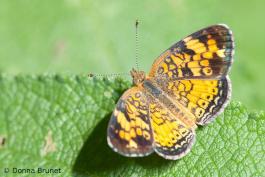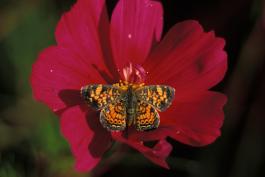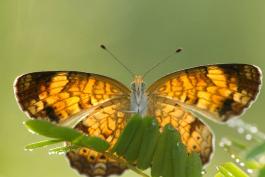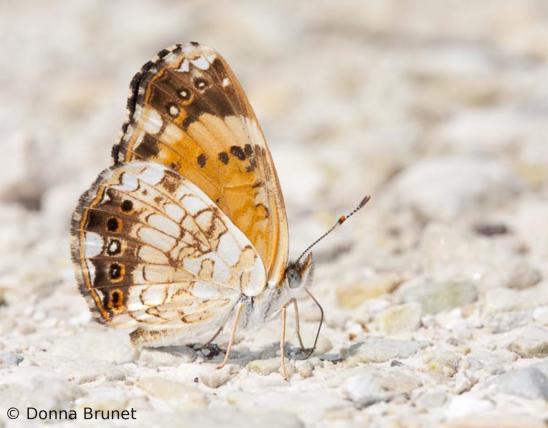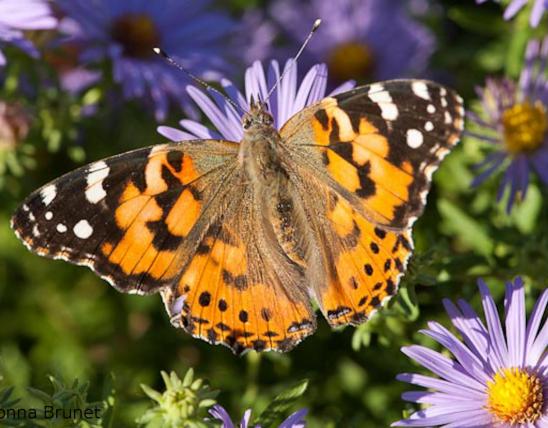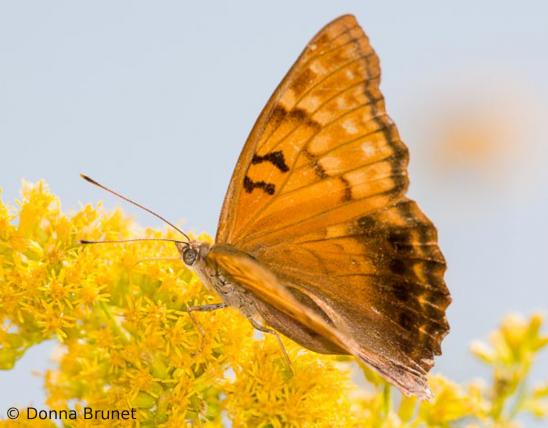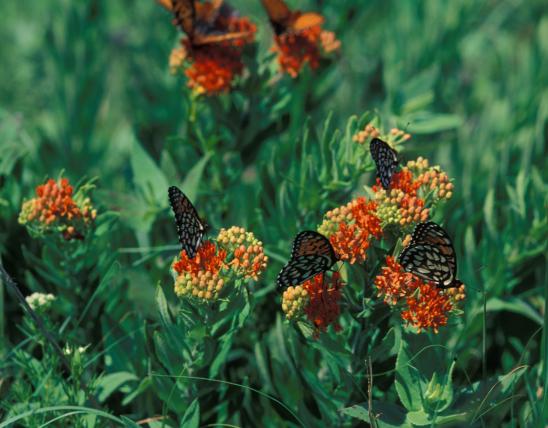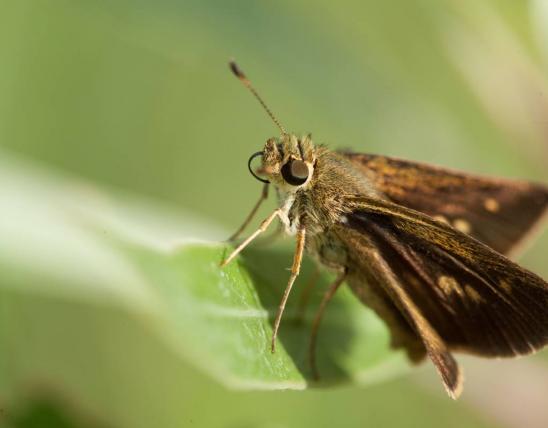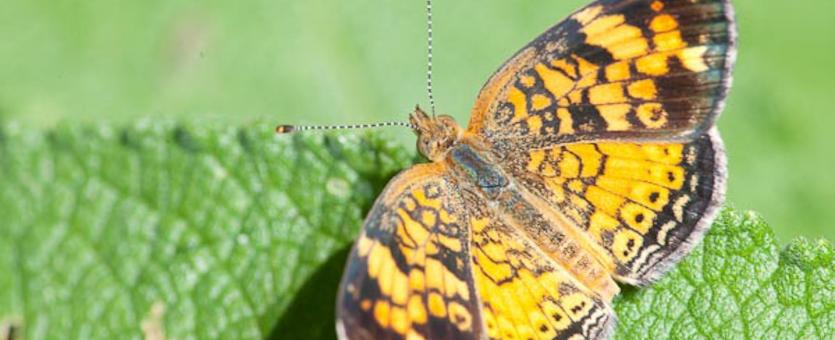
In adult pearl crescents, the wing pattern varies, but all have orange wings with black borders with fine black markings. The common name comes from a crescent-shaped, light-colored spot surrounded by a darker patch on the outer edge of the hindwing, viewed from below. The first pair of legs are short, hairy-looking, and useless for walking.
Larvae are brownish-black with light dots, yellow lateral stripes, and yellowish-brown spines. The head is black with a pale spot in front.
Wingspan: 1–1½ inches.

Statewide.
Habitat and Conservation
Commonly found in open areas, including grasslands, pastures, woodland openings, and lawns. One of the most common butterflies in eastern North America, it is found in all regions of Missouri from April through November. The pearl crescent is active and combative, frequently darting at other species that invade its territory.
Food
Larvae feed on various aster species. The adults are avid flower visitors and sometimes fairly swarm at puddles and damp places.
Status
Abundant breeding resident.
Life Cycle
Adults fly from early April through November. Eggs are laid in clusters of up to 200 under the leaves of the food plant. Larvae that occur in late season hibernate.
Human Connections
In addition to their considerable aesthetic value, butterflies pollinate plants, many of which have commercial importance. Additionally, because butterflies are sensitive to toxins and disturbance, they are good indicators of the overall status of ecosystems.
Ecosystem Connections
The caterpillars are herbivores that graze on vegetation. The adults serve a role in pollination. All stages provide food for predators.



